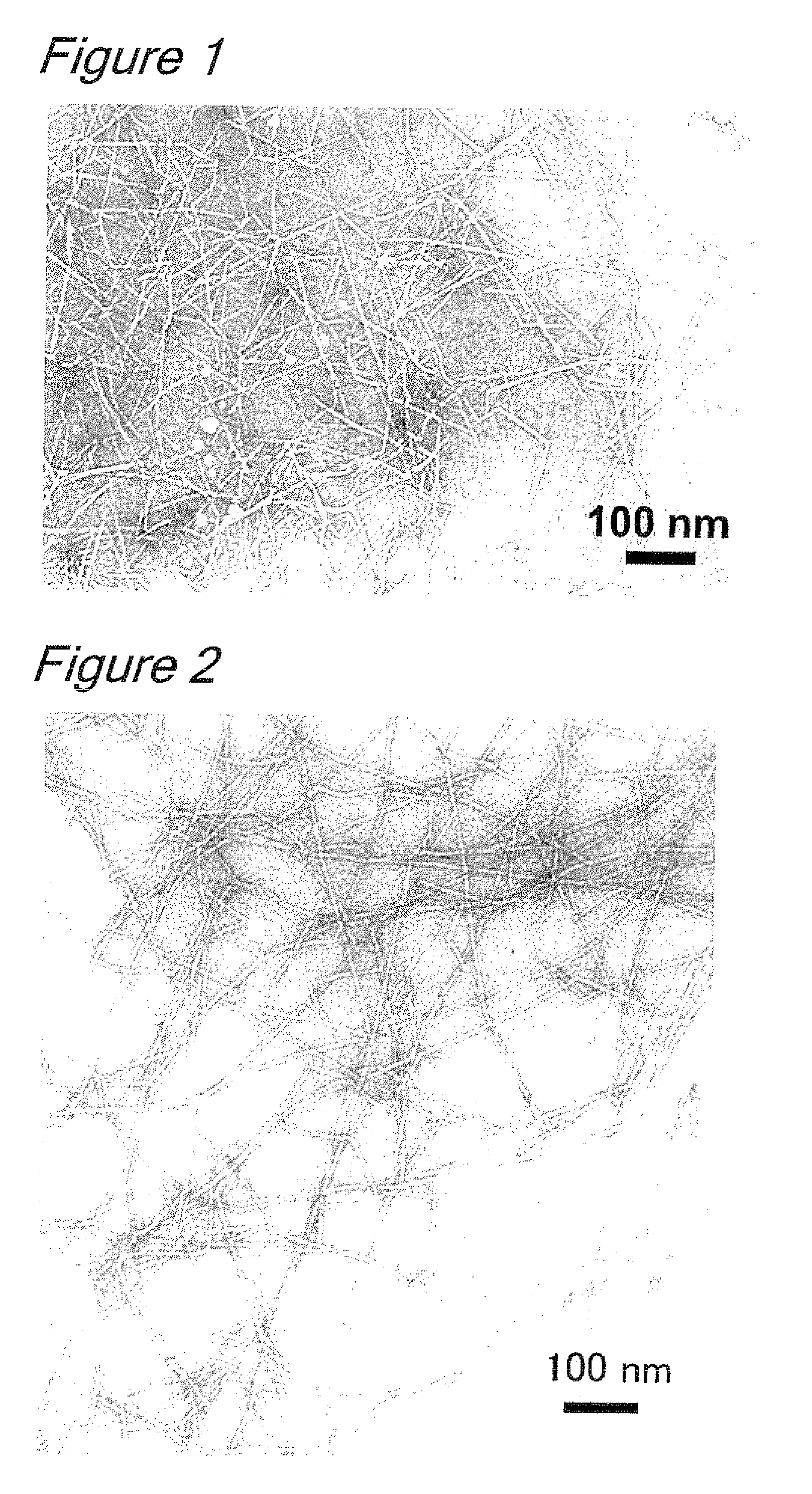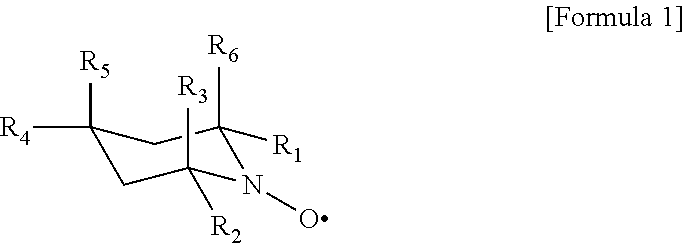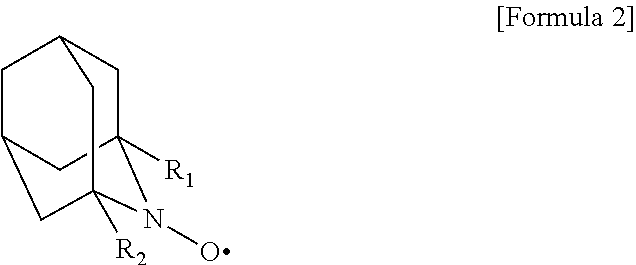Processes for producing cellulose nanofibers
a technology of cellulose nanofibers and nanofibers, which is applied in the direction of chemical/physical processes, pulping with acid salts/anhydrides, and manufacturing of nanofibers, etc., can solve the problems of large yield loss, difficult to convert and loss of nanofibers. , to achieve the effect of retaining the straight fiber shape, the nanofibers lose their characteristic stiffness, and the difficulty of converting wood cellulose into nanofibers
- Summary
- Abstract
- Description
- Claims
- Application Information
AI Technical Summary
Benefits of technology
Problems solved by technology
Method used
Image
Examples
example 1
[0041]To 500 ml of a solution of 94 mg (0.5 nmol) of 4-methoxy TEMPO (Sigma Aldrich) and 755 mg (5 mmol) of sodium bromide in water was added 5 g (dry bone) of softwood-derived bleached unbeaten sulfite pulp (NIPPON PAPER CHEMICALS CO., LTD.), and the mixture was stirred until the pulp was homogeneously dispersed. After adding 18 ml of an aqueous sodium hypochlorite solution (active chlorine 5%), the reaction system was adjusted to pH 10.3 with a 0.5 N aqueous hydrochloric acid solution and an oxidation reaction was started. As the pH in the system decreased during the reaction, a 0.5 N aqueous sodium hydrochloride solution was sequentially added to adjust the reaction system at pH 10. After the reaction was continued for 2 hours, the reaction mixture was filtered through a glass filter and thoroughly washed with water to give oxidized pulp. A 0.3% (w / v) slurry of the oxidized pulp was stirred at 12,000 rpm for 10 minutes to give a clear gel-like aqueous solution. This aqueous solut...
example 2
[0042]Oxidation reaction was performed in the same manner as in Example 1 but using 4-tert-butoxy TEMPO, and the pulp slurry was stirred at 12,000 rpm for 10 minutes to show that the pulp had been converted into nanofibers. The 0.3% (w / v) aqueous cellulose nanofiber solution had a Brookfield viscosity (60 rpm, 20° C.) of 930 mPa·s.
[0043]The 4-tert-butoxy TEMPO was obtained by reacting 4-hydroxy TEMPO and tert-butyl chloride in dichloromethane at 0-5° C.
example 3
[0044]Oxidation reaction was performed in the same manner as in Example 1 but using 4-O-acetyl TEMPO, and the pulp slurry was stirred at 12,000 rpm for 10 minutes to show that the pulp had been converted into nanofibers. The 0.3% (w / v) aqueous cellulose nanofiber solution had a Brookfield viscosity (60 rpm, 20° C.) of 980 mPa·s.
[0045]The 4-O-acetyl TEMPO was obtained by reacting 4-hydroxy TEMPO and acetyl chloride in dichloromethane at 0-5° C.
PUM
| Property | Measurement | Unit |
|---|---|---|
| temperature | aaaaa | aaaaa |
| width | aaaaa | aaaaa |
| width | aaaaa | aaaaa |
Abstract
Description
Claims
Application Information
 Login to View More
Login to View More - R&D
- Intellectual Property
- Life Sciences
- Materials
- Tech Scout
- Unparalleled Data Quality
- Higher Quality Content
- 60% Fewer Hallucinations
Browse by: Latest US Patents, China's latest patents, Technical Efficacy Thesaurus, Application Domain, Technology Topic, Popular Technical Reports.
© 2025 PatSnap. All rights reserved.Legal|Privacy policy|Modern Slavery Act Transparency Statement|Sitemap|About US| Contact US: help@patsnap.com



